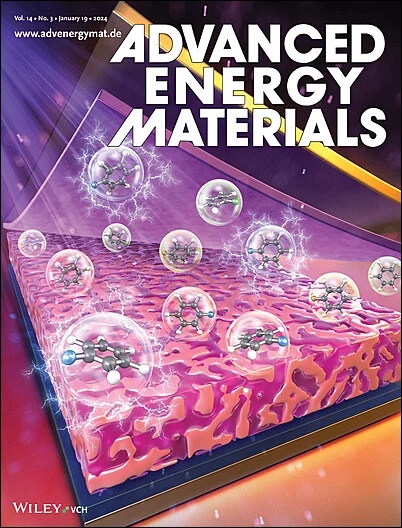分层共形Li+/电子导电和机械坚固的界面,使天然石墨阳极实现快速充电和长周期操作
IF 26
1区 材料科学
Q1 CHEMISTRY, PHYSICAL
引用次数: 0
摘要
锂离子电池已经彻底改变了全球能源存储系统;然而,目前的技术还不能满足快速充电和长周期的需求,主要是由于石墨阳极材料的倍率性能和循环稳定性不足。本文提出了一种表面极性调节策略,在天然石墨阳极上构建分层共形的Li+/电子导电和机械坚固的界面,该界面由内氮掺杂碳层和外Li3PO4层组成。各种原位表征表明,可以推导出具有良好机械鲁棒性和优越稳定性的无机固体电解质界面(SEI),并且该人工界面推导出的SEI不仅可以极大地促进脱溶剂过程、Li +和电子传递,还可以减少应变积累和结构不稳定性,抑制锂枝晶的形成。改性后的天然石墨阳极表现出优异的倍率性能,在10c倍率下的容量保持率为71.8%,在0.1 C倍率下的容量保持率为71.8%,在1000次循环后的长周期性能表现优异,容量保持率为95.9%。这种表面工程方法将激发未来锂离子电池长循环寿命和快速充电负极材料的发展。本文章由计算机程序翻译,如有差异,请以英文原文为准。
Hierarchically Conformal Li+/Electron Conductive and Mechanically Robust Interface Enabling Natural Graphite Anodes for Fast‐Charging and Long‐Cycling Operation
Lithium‐ion batteries have revolutionized global energy storage systems; however, current technologies fall short of meeting fast‐charging and long‐cycling demands, primarily due to the inadequate rate performance and cycling stability of graphite anode materials. Herein, a surface polarity regulation strategy is proposed to construct a hierarchically conformal Li+ /electron conductive and mechanically robust interface on natural graphite anodes, consisting of an inner N‐doped carbon layer and an outer Li3 PO4 layer. Various in situ characterizations unravel that an inorganic solid electrolyte interface (SEI) can be derived with great mechanical robustness and superior stability, and this derived SEI with the artificial interface can not only greatly facilitate the de‐solvation process as well as Li⁺ and electron transport, but also reduce the strain accumulation and the structural instability, and inhibit the formation of lithium dendrites as well. The as‐modified natural graphite anode demonstrates remarkable rate performance with 10 C rate capacity retention of 71.8% to that of 0.1 C rate, and outstanding long‐cycle performance with 95.9% capacity retention after 1000 cycles. This surface engineering approach should inspire the development of long‐cycle‐life and fast‐charging anode materials for future lithium‐ion batteries.
求助全文
通过发布文献求助,成功后即可免费获取论文全文。
去求助
来源期刊

Advanced Energy Materials
CHEMISTRY, PHYSICAL-ENERGY & FUELS
CiteScore
41.90
自引率
4.00%
发文量
889
审稿时长
1.4 months
期刊介绍:
Established in 2011, Advanced Energy Materials is an international, interdisciplinary, English-language journal that focuses on materials used in energy harvesting, conversion, and storage. It is regarded as a top-quality journal alongside Advanced Materials, Advanced Functional Materials, and Small.
With a 2022 Impact Factor of 27.8, Advanced Energy Materials is considered a prime source for the best energy-related research. The journal covers a wide range of topics in energy-related research, including organic and inorganic photovoltaics, batteries and supercapacitors, fuel cells, hydrogen generation and storage, thermoelectrics, water splitting and photocatalysis, solar fuels and thermosolar power, magnetocalorics, and piezoelectronics.
The readership of Advanced Energy Materials includes materials scientists, chemists, physicists, and engineers in both academia and industry. The journal is indexed in various databases and collections, such as Advanced Technologies & Aerospace Database, FIZ Karlsruhe, INSPEC (IET), Science Citation Index Expanded, Technology Collection, and Web of Science, among others.
 求助内容:
求助内容: 应助结果提醒方式:
应助结果提醒方式:


